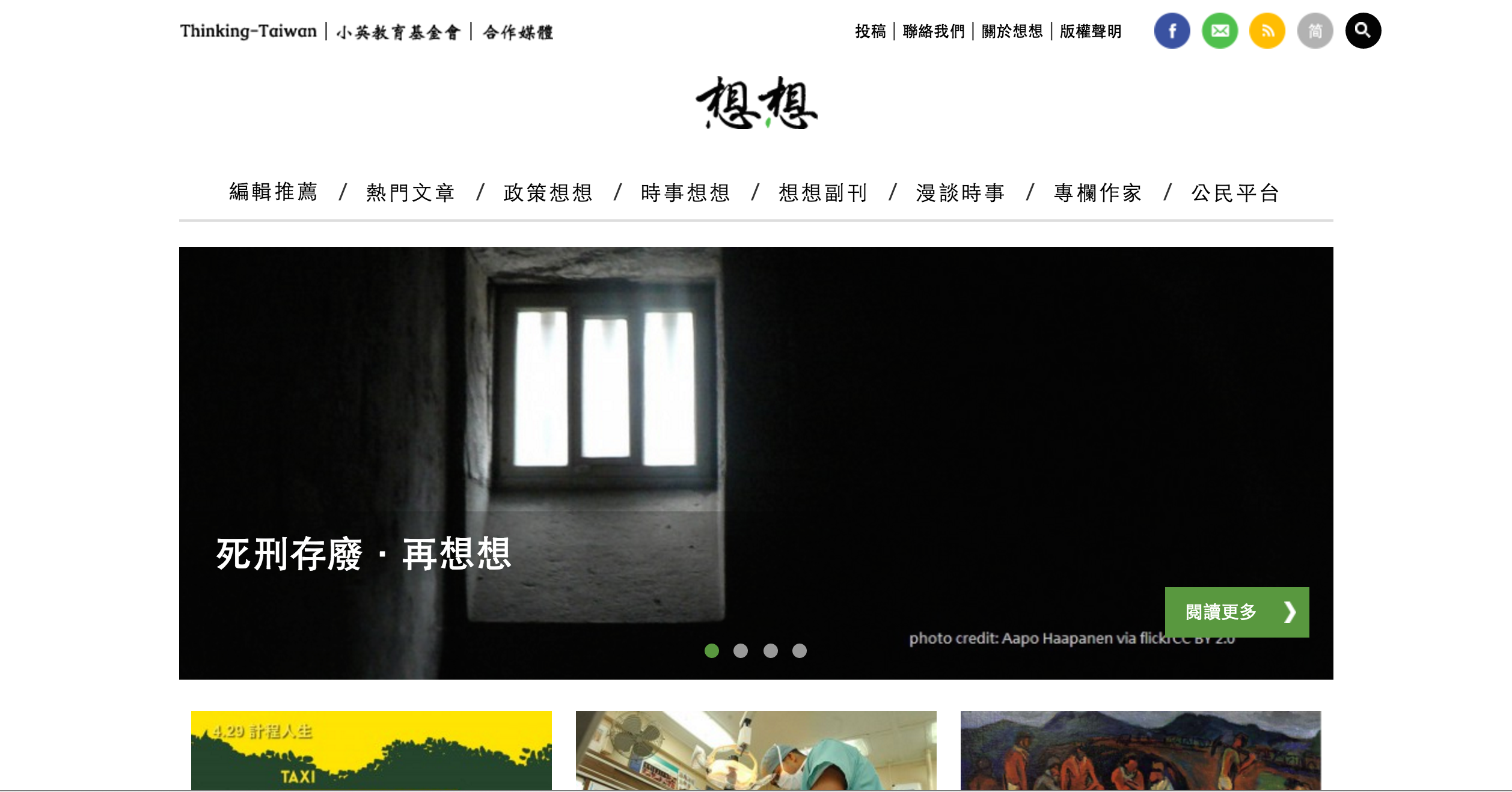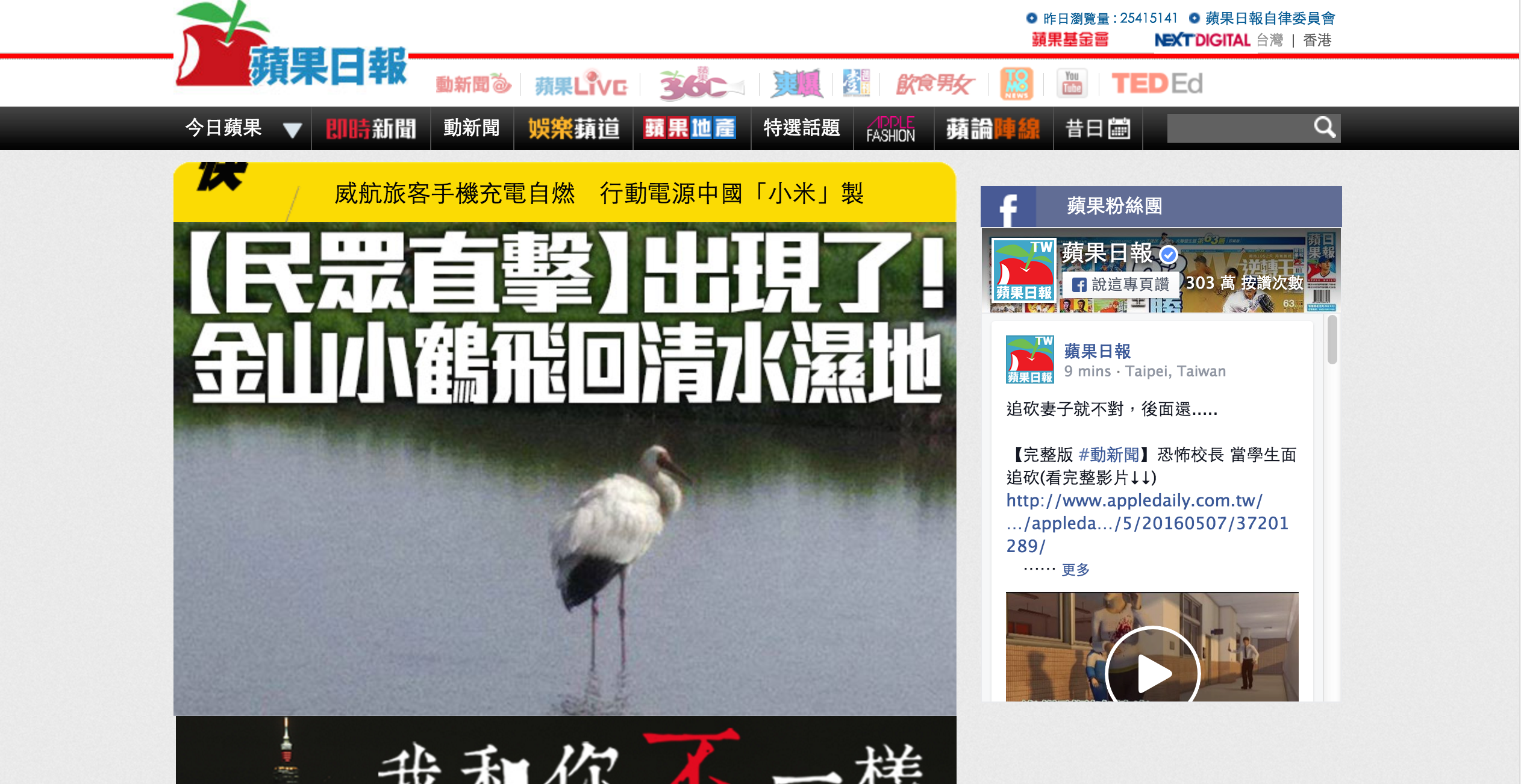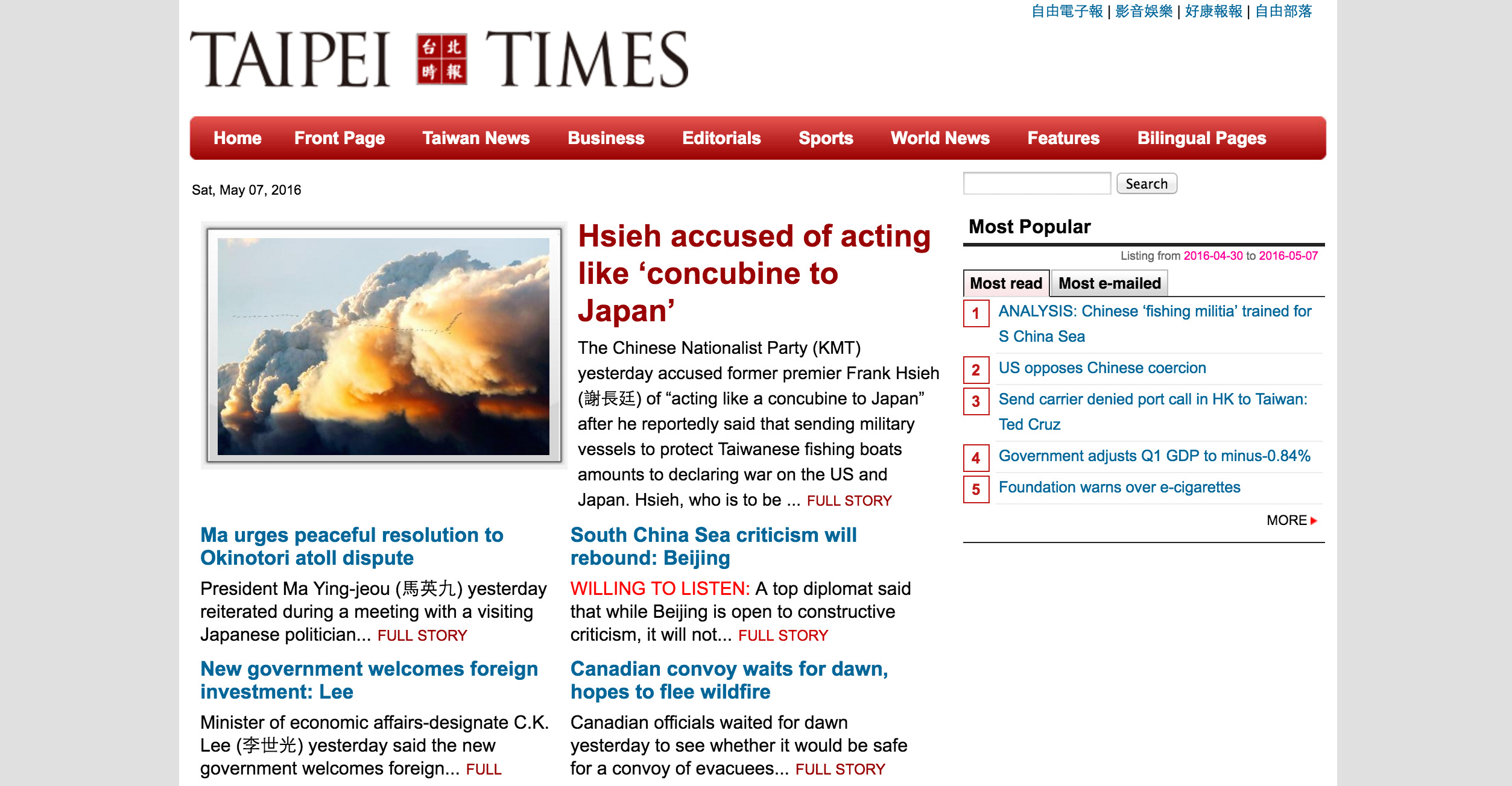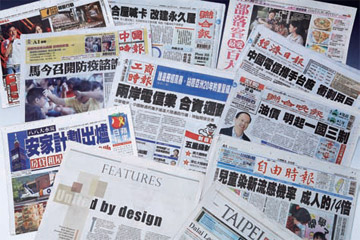by Brian Hioe
語言:
English
Photo Credit: Ministry of Foreign Affairs
WITH THE RECENT closing down of Thinking Taiwan and Taiwan Communique, English-language media outlets covering Taiwan have seen a blow. English language coverage of Taiwan is vital to Taiwan given English’s status as the world lingua franca. It is, however, that pan-Green media outlets in general face challenges regarding how to position themselves relative to the upcoming Tsai administration.
Thinking Taiwan was, after all, a bilingual publication whose Chinese section was many times larger than its English section, and one which featured commentaries from a plurality of viewpoints. Thinking Taiwan was run by the Thinking Taiwan Foundation, a thinktank launched by Tsai. As the rumors go, part of the reason for Thinking Taiwan’s shuttering was because of an inability to decide what stance to take when publishing viewpoints critical of Tsai. Regardless, it seems likely that Thinking Taiwan would have been a liability for the Tsai administration in power, and the KMT would have seized upon material published within it to attack Tsai.
 Thinking Taiwan
Thinking Taiwan
It is to be seen how Liberty Times will respond, although it seems likely they will adopt a stance similar to that taken under the Chen Shui-Bian administration. The Taipei Times, subordinate to the Liberty Times, will probably follow suit. Apple Daily, though not exactly fitting squarely into the pan-Green or pan-Blue camp, probably hews closer to the former than the latter. However, Apple Daily likely does not face the same challenges in some sense, due to its nature as media originally from Hong Kong that later entered the Taiwanese market. Some have raised the possibility that crackdowns against Hong Kong media may affect the Apple Daily in the future, however, as with the shuttering of House News in 2014.
Some have pointed to the apparent decline in pan-Green media as a sign that the pan-Green camp views Tsai’s victory as a fait accompli, hence that the amount of resources diverted towards pan-Green media can be cut. But this in some way represents the challenges faced by pan-Green media. Compared to pan-Blue media, it is probably true that pan-Green and independent media face an uphill struggle given less resources. This goes back to the fundamental struggle of the DPP and other pan-Green political actors having less resources than the KMT and pan-Blue camp. The influx of Chinese money, as protested against by the anti-media monopoly movement, also does not help.
 Apple Daily
Apple Daily
As for English language coverage of Taiwan, it is a greater question as to what will develop in the media scene. It is that a plurality of other platforms can adjust to cover the vacuum left by Thinking Taiwan in coverage, there quite naturally being far greater coverage of Taiwan in Chinese. But there were few English language platforms which covered Taiwan to begin with. At present, there are also rumors of cuts in resources in the Taipei Times, with increased coverage using AP articles.
The Taipei Times, however, has never sought to cover breaking news events in realtime, as its website only updates once a day, and the Taipei Times does not devote significant energy to maintaining a social media presence on Facebook, Twitter, and other platforms. Apart from a failure to adjust to the present state of the social-media driven Internet, likely this represents a lack of resources from the get-go.
 Taipei Times
Taipei Times
The lack of English news coverage of Taiwan, of course, reflects Taiwan’s state of marginalization in the world, with major news agencies devoting resources more often to covering Taiwanese news from bureaus based out of China or by sending in journalists from China when needed. Crackdowns on press freedom in China have led to relocations to Hong Kong for some news agencies, but in recent times, conditions from press in Hong Kong have also been worsening as a result of Chinese government influence.
It remains to be seen if Taiwan will unexpectedly reap the benefits, if news agencies decide the next step would be to relocate to Taiwan as another Sinophone territory, but one which remains outside of Beijing’s direct control. However, international media being based out of Taiwan does not mean news coverage of Taiwan would see any improvement in quality necessarily, seeing as much news coverage produced out of Taiwan already largely recapitulates KMT talking points, rather than seek to represent both pan-Green and pan-Blue viewpoints equally.
 Photo credit: Ministry of Foreign Affairs
Photo credit: Ministry of Foreign Affairs
Thankfully it is the Taipei Times and not the China Post which is Taiwan’s international newspaper of note, but even then, Taiwan only has one international newspaper of any standing. There are few news outlets native to Taiwan which operate in English. Again, the playing field for media is largely in favor of the KMT and if it is that pan-Green media faces uphill challenges in Chinese language coverage, it is so much the more so when it comes to English language coverage. On the flipside, however, it is that the lack of money which goes into English language media coverage, even when unprofitable, is a vulnerability for Taiwan and a sign of the insufficient amount of attention to policing representations of Taiwan in the international media, even when this may prove dangerous for Taiwan.
It may be that in recent years a variety of “new media” has arisen to fill the gaps where Taiwanese news coverage is concerned in both Chinese and English, but the reach of “new media” is not as large as established forms of media, and new media often caters to niche audiences. In particular, independent “new media” sometimes operates beyond the traditional “Green/Blue” divide and can offer the critique of both camps. But it remains that established or traditional forms of media have resources which “new media” does not, for example, in being able to dispatch reporters to cover geographically remote events or events which take place behind closed doors. “New media” is oftentimes parasitic on more established forms of media in this way, even if the lack of traditional restrictions can make “new media” more flexible.
Of “new media” ventures which have attempted to become businesses or NGOs, it also is a question as to whether “new media” is sustainable as a business model. Oftentimes, commercial “new media” is actually hoping to be acquired by more established media down the line, as is true of the startup model more generally, and there are obvious limitations to this. Thus, it is in fact that more traditional media still occupies a place of importance in Taiwan’s media ecology. So, then, will we see as to the fate of pan-Green media in Taiwan under a Tsai presidency.


 Thinking Taiwan
Thinking Taiwan Apple Daily
Apple Daily Taipei Times
Taipei Times Photo credit: Ministry of Foreign Affairs
Photo credit: Ministry of Foreign Affairs